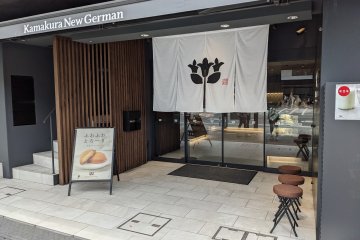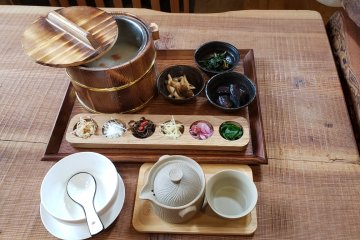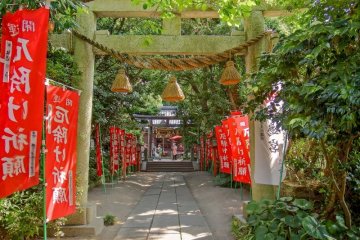

品尝过 Aratama 著名的炸猪排后,你一定会爱上这种新鲜的味道。除了炸猪排之外,餐厅还提供了多样的选择。你一定要尝尝 Aratama 的其他菜肴,如马苏里拉芝士炸肉饼和奶油炸肉饼。


在富有创意的法国餐厅 Nature et Sens,用餐者可以完全享受感官体验。时令食材和镰仓农产品在这些精美绝伦的菜肴中占据最关键的位置。您可以在用餐时在选择极多的葡萄酒收藏中,挑选一杯享用。

Ki to Toki 使用不含动物成分的产品、糙米和当地采购的新鲜蔬菜,制作出精湛的素食餐点,不仅美味更赏心悦目。一定要尝试他们的 17 种不同菜肴和发酵饮料,搭配餐后的甜点、香草茶或咖啡。

Hongakuji Temple (本覚寺) is dedicated to Ebisu, part of the Kamakura seven deities of good luck. The temple was founded by Ashikaga Mochiuji in 1436.

Myohonji, located in the heart of Kamakura, is one of the oldest Nichiren-sect temples of Japanese Buddhism. Despite its city location, the temple is renowned for its tranquil atmosphere and lush encircling nature. It also tends to be less touristy than other temples in the area. Myohonji was founded in 1260 by Hiki Yoshimoto after he encountered the Buddhist priest and philosopher Nichiren Shonin in Kamakura. The site of the temple was previously home to the Hiki clan, before they were defeated by the Hojo clan in the early 1200s. Hiki Yoshikazu donated his home to Nichiren Shonin for the souls of his fallen clan, which later grew to be Myohonji. Some notable structures include Soshido, Myohonji’s largest temple building, Nitenmon gate, a beautiful inner gate, and a bronze statue of Nichiren. Enjoy the temple grounds in all seasons with spring cherry blossoms, verdant summer foliage, fiery autumn maple and ginkgo leaves, and winter plum blossoms.

Yakumo Shrine, also called Yakumo Jinja, was established around 1082 by Yoshimitsu Minamoto—a Minamoto clan samurai during the Heian Period—and is believed to be the oldest talismanic shrine in Kamakura. It is located in the Omachi neighborhood and is said to ward off bad luck. Yoshimitsu Minamoto founded the shrine to help protect the people of Kamakura against the many epidemics that had taken hold of the area. The shrine represented a branch of Gion Shrine (modern day Yasaka Shrine) in Kyoto, which was known for its protection against illnesses. When the severity of Kamakura’s epidemics lessened in 1084, the shrine became a popular spot to repel bad luck. Today, the shrine is a small, quiet, and off-the-beaten-path spot to pray for good luck. Enjoy the peaceful grounds and be sure to collect a red Goshuin stamp at the shrine’s office to commemorate your visit.